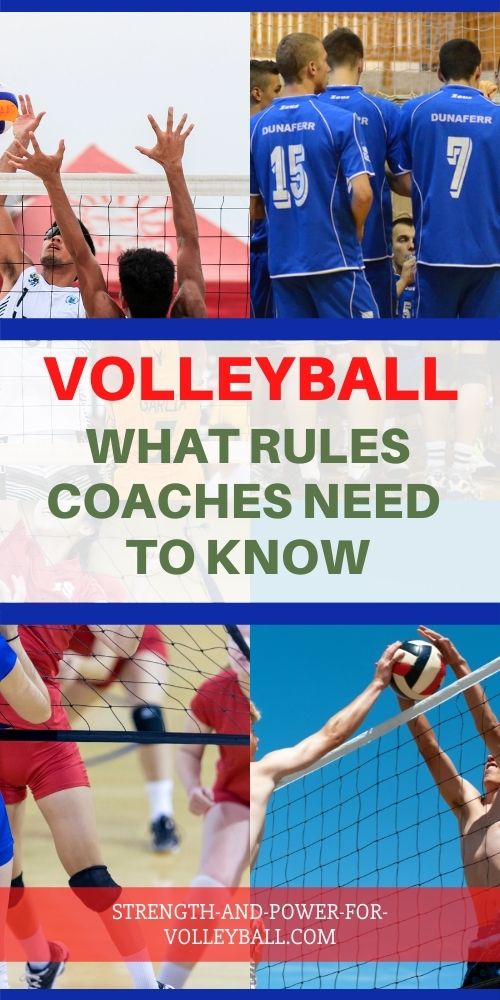Ground Rules
Official Volleyball Rule of USAV
USAV Rules for playing surface, playable area, court markings, overhead obstruction, etc
It's important to understand the official volleyball rule and ground rules for 2014 USAV Domestic Competition Regulations (DCR). Not just for officiating, but also as a player and coach.
First Things to Do
- Know the applicable rules and interpretations.
- Be on the same page as everyone else. Rules need to be applied consistently to all courts. If you're unsure of the ground rules, ask your head referee for clarification.
- Get answers before someone asks you.
Check the Court
- Identify court markings. All lines should be uninterrupted. If lines may be confusing to the teams, point this out to the captains at pre-match meeting.
- Define the playing area. Know where the free zone ends. Identify the playing area, non-playing area, playing surface, and spectator area. Identify if adjacent courts need to be addressed.
The non-playing area includes the scores table, team benches, and spectator areas.
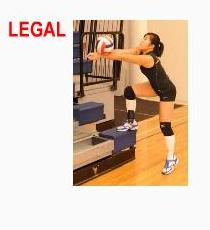
When sport court is used, players may play beyond the sport court if the change of surface is less than a quarter inch. At convention centers, players must be in contact with the sport court when playing the ball.
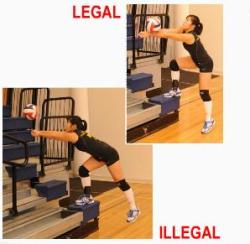
When playing a ball that is not over the playing surface, a body part must be touching the playing surface at the time of contact.
The player must complete the entire service action without touching the non-playing surface. This means from the moment the referee blows the whistle and beckons, the player must be on the playing surface.
The player can have a body part off the service as long as they aren't touching the non-playing surface.
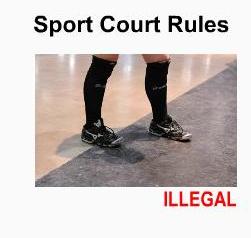
Official Volleyball Rule - Overhead Objects
A served ball contacting an overhead object is always "out".
Any ball that contacts an object over a non-playing area is "out".
The height of an object over the playing area determines what action to take (if any).
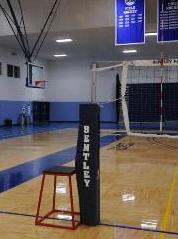

Identify overhead obstructions before the match.
Discuss possible situations with the officiating crew and playing teams.
If the ball hits an object above 15 feet above a playable area, the ball will remain in play.
You don't take trajectory of the traveling ball into account.
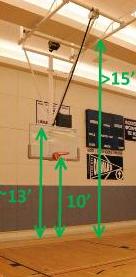
When pursuit isn't used, the ball is "out" as soon as it makes contact with an overhead object after crossing (or partially crossing) the plane of the net.
Also, it's "out" if the ball contacts the ceiling or obstruction above the team's playing area and crosses the plane of the net into the opponents court.
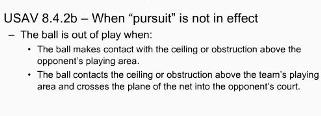
Official Volleyball Rule - When pursuit is in effect...
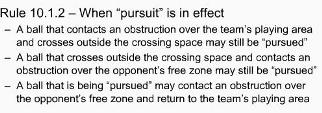
Official Volleyball Rule - Track above around the court...
Look at the lowest part of the track. Is the track above the playing area? Is the lowest part below 15 feet?
Official Volleyball Rule - Divider nets
A divider net is ruled like a wall. A player touching the divider net is not a fault.
The ball touching the net is out of play.
Only the player playing the ball can move the net to play the ball.
The ball is ruled "out" if any other player moves the net to help a player make the play.
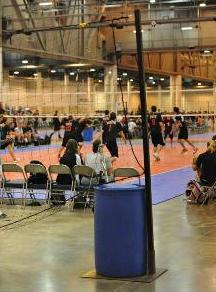
Official Volleyball Rule Tip
Important tips for the rules of the court...
- Know the ground rules before meeting with the captains.
- Each court is unique. Discuss the ground rules with your ref partner. It's important to be on the same page. Establishing rules from the beginning will help prevent future problems!
If you enjoyed these tips and would like to keep it close to you at any time, just save this pin to your Pinterest Volleyball Training Board.
Volleyball › Officiating Volleyball › Ground Rules
